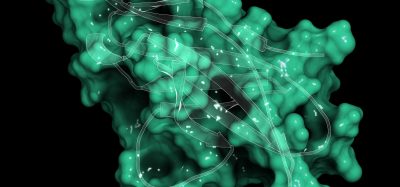New muscular dystrophy treatment shows promise in pre-clinical trials
Posted: 30 June 2020 | Victoria Rees (Drug Target Review) | No comments yet
A group of researchers has used locked nucleic acid gapmer antisense oligonucleotides to treat facioscapulohumeral muscular dystrophy in cells and mice.

Researchers have designed a potential new treatment for one of the most common forms of muscular dystrophy. Led by scientists at the University of Alberta, Canada, the team created and tested synthetic DNA-like molecules that interfere with the production of a toxic protein that destroys the muscles of people who have facioscapulohumeral muscular dystrophy (FSHD).
“There is no cure for FSHD at the moment,” said Professor Toshifumi Yokota, at the University of Alberta, who has devoted his career to searching for treatments for all forms of muscular dystrophy. “This paper shows the potential for this new type of therapy and makes progress towards finding a treatment candidate.”
FSHD, the third most common form of muscular dystrophy, causes patients to produce the protein DUX4, which damages muscle cells and causes the cells to die.
“Our goal is to knock down the production of DUX4 so their muscle cells can survive,” said Yokota.
His team designed the treatment molecules, technically known as locked nucleic acid (LNA) gapmer antisense oligonucleotides (AOs), or ‘gapmers’ for short. These specifically target the location in the gene that causes DUX4 production.
The researchers tested the treatment in patient-derived cells in the laboratory and in mice. They found the muscle cells were larger and more functional after treatment.
“We used a very low concentration of the treatment and it knocked down more than 99 percent of the DUX4 production, so this is extremely efficient,” Yokota said.
Yokota notes that gapmer therapy has been developed for diseases such as inherited high cholesterol, Huntington’s disease and even some cancers. However, none has yet been approved for muscle diseases such as muscular dystrophy.
According to the team, the next steps for their research include testing better delivery methods, studying safety and side-effects and determining how long the drug’s benefits last. The researchers have applied for a patent and are seeking a pharmaceutical company partner to conduct a human trial.
“We are not ready to start clinical trials but it’s a significant first step towards future drug development,” Yokota said.
The study was published in Proceedings of the National Academy of Sciences.
Related topics
Drug Development, Drug Discovery, Drug Targets, Research & Development, Therapeutics
Related conditions
facioscapulohumeral muscular dystrophy (FSHD), Muscular dystrophy
Related organisations
University of Alberta
Related people
Professor Toshifumi Yokota







